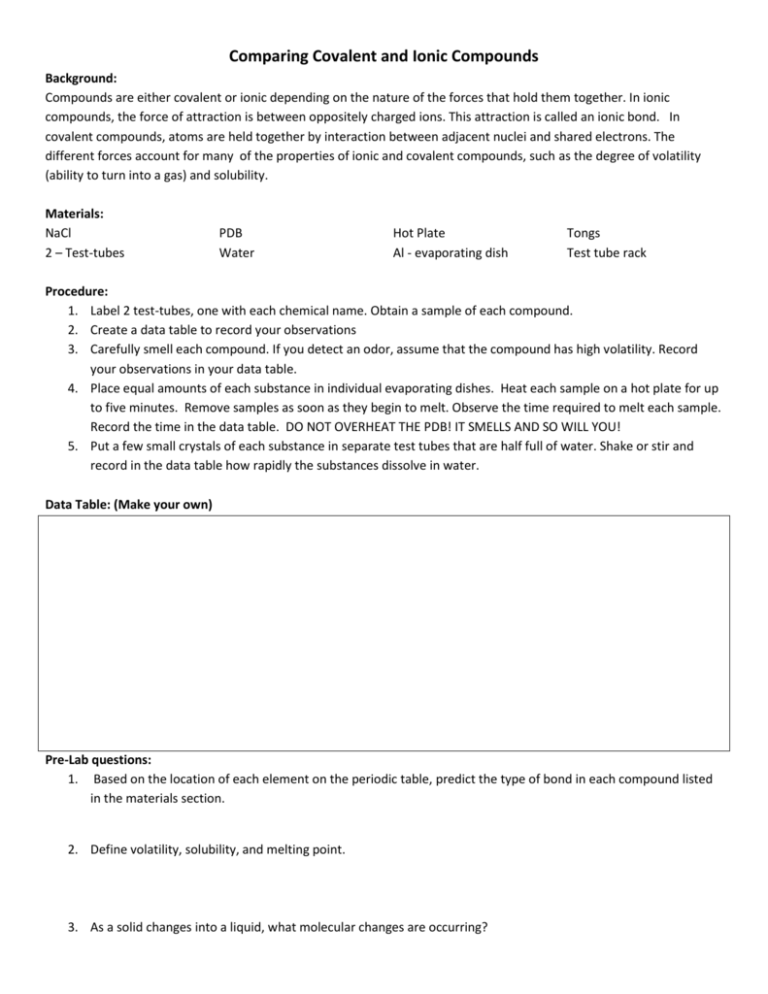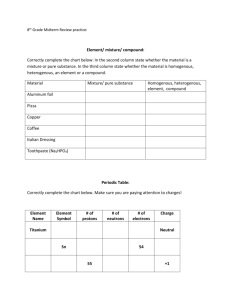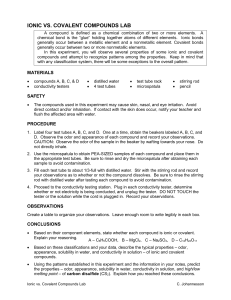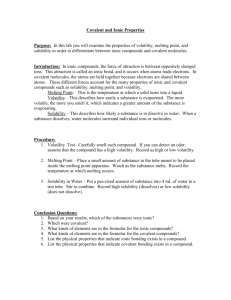Comparing Covalent and Ionic Compounds
advertisement

Comparing Covalent and Ionic Compounds Background: Compounds are either covalent or ionic depending on the nature of the forces that hold them together. In ionic compounds, the force of attraction is between oppositely charged ions. This attraction is called an ionic bond. In covalent compounds, atoms are held together by interaction between adjacent nuclei and shared electrons. The different forces account for many of the properties of ionic and covalent compounds, such as the degree of volatility (ability to turn into a gas) and solubility. Materials: NaCl 2 – Test-tubes PDB Water Hot Plate Al - evaporating dish Tongs Test tube rack Procedure: 1. Label 2 test-tubes, one with each chemical name. Obtain a sample of each compound. 2. Create a data table to record your observations 3. Carefully smell each compound. If you detect an odor, assume that the compound has high volatility. Record your observations in your data table. 4. Place equal amounts of each substance in individual evaporating dishes. Heat each sample on a hot plate for up to five minutes. Remove samples as soon as they begin to melt. Observe the time required to melt each sample. Record the time in the data table. DO NOT OVERHEAT THE PDB! IT SMELLS AND SO WILL YOU! 5. Put a few small crystals of each substance in separate test tubes that are half full of water. Shake or stir and record in the data table how rapidly the substances dissolve in water. Data Table: (Make your own) Pre-Lab questions: 1. Based on the location of each element on the periodic table, predict the type of bond in each compound listed in the materials section. 2. Define volatility, solubility, and melting point. 3. As a solid changes into a liquid, what molecular changes are occurring? Results: 1. Which compound is more volatile? _________________________________ 2. Which compounds melts more quickly? _________________________________ 3. Which compounds is more soluble? _________________________________ Analysis: 1. Explain why the type of bond could be used to determine the volatility of a substance. 2. Does the type of bond effect melting time? Explain. 3. Which would be more dangerous near an open flame, an ionic or covalent compound? Why? 4. Which compound, ionic or covalent, would you expect to have a higher boiling point? Why? 5. When PDB was placed in the water, what type of mixture was formed? 6. When the NaCl was placed in the water, what type of mixture was formed? 7. Suppose you had a sample of two compounds mixed together. Both compounds consist of fine white crystals. You know that one compound is ionic and the other covalent. How might you separate the two compounds? Conclusion:








